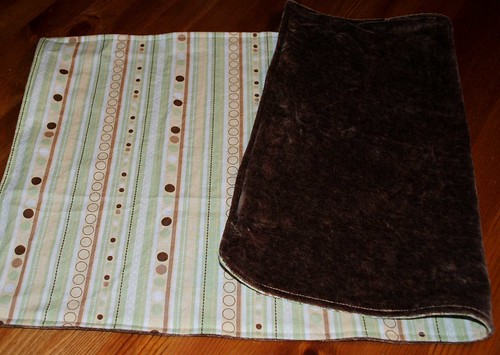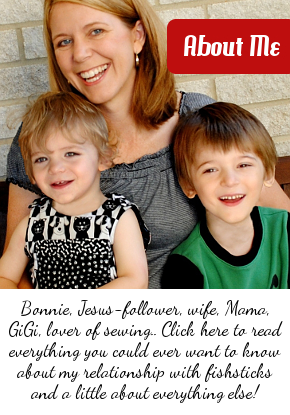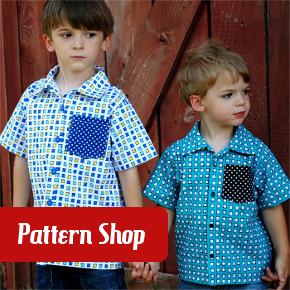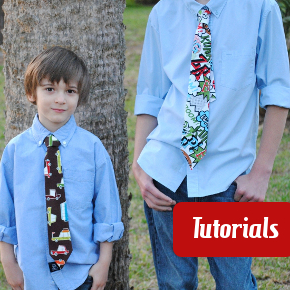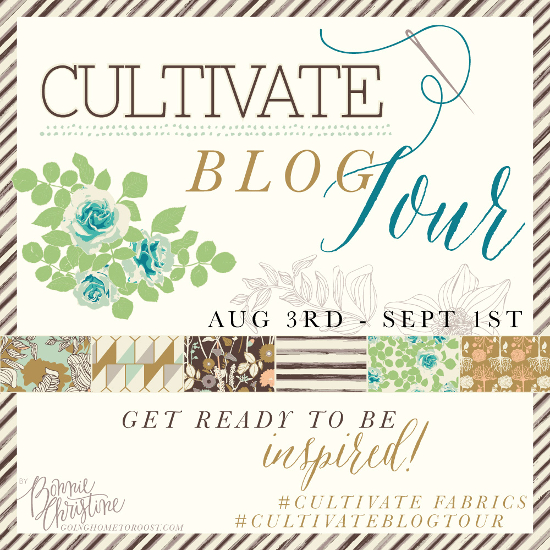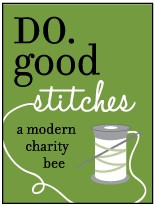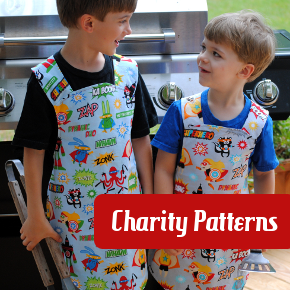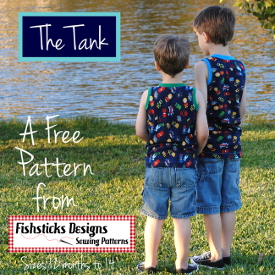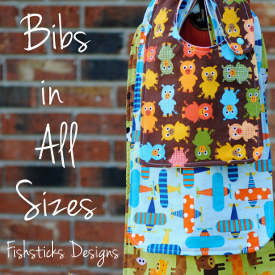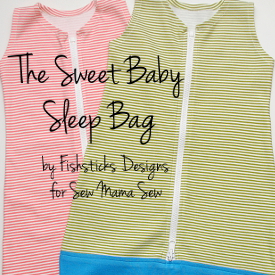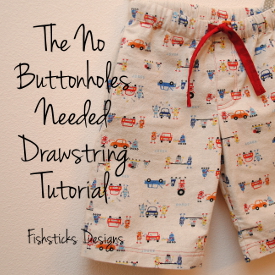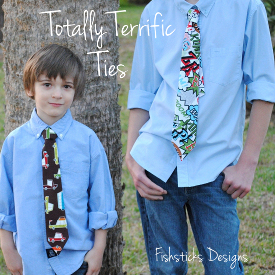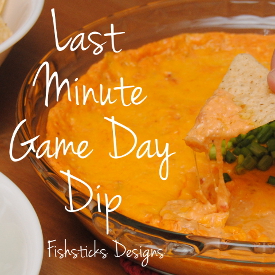Bonnie
In My Backyard
I’m not a huge fan of the heat here in Dallas. It’s supposed to hit triple digits this weekend. Ugh! I do, however, love the life that shares our backyard. We’ve had a few beautiful visitors the last few weeks. We had a woodpecker and a bluejay, both of whom escaped my camera lense. Then this robin couple . . .

. . . and this cardinal dropped in.

We have a sweet rabbit family that shares our backyard.

There are apples on the apple tree . . .

. . . and pears on the pear tree.

Pears are not the only thing nestled in the pear tree, though . . .


We’ve only caught a peek at mama and papa bird, but we think they’re mockingbirds. What’s sharing your backyard?
It’s My Turn!
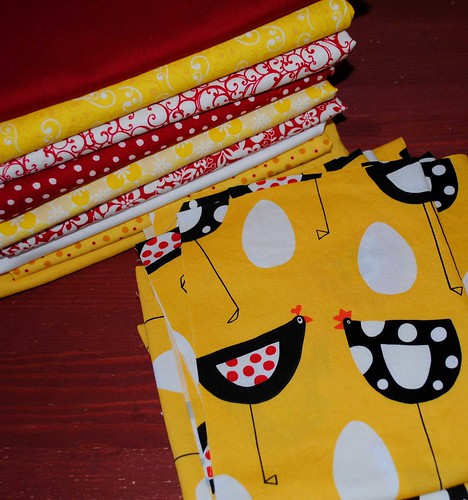
June is my month to send off fabrics and have quilt blocks sewn for me at the Fresh Comfort Virtual Quilting Bee. I chose Monaluna Chickens for Robert Kaufman as the main fabric and asked for the other quilters to fussy cut the chickens and feature them somehow. Everything else about the blocks, I’m leaving up to them! I’m planning to sew up a whimsical quilt and maybe some accessories for my kitchen when I get them all back.
I did a couple of blocks myself before I sent the fabrics off. I started with this fun wonky house block with a giant chicken in the yard:
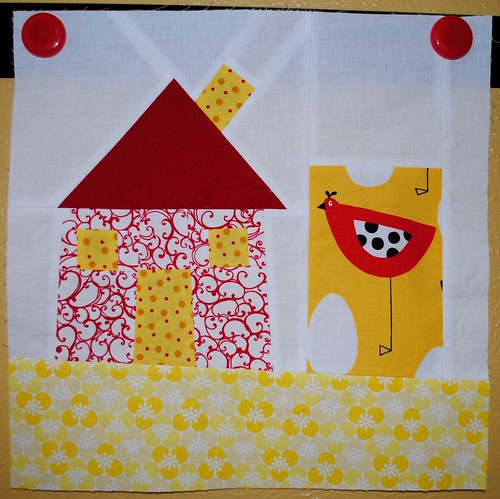
Then I sewed up a more traditional Shoofly block with chickens peeking out from each side:
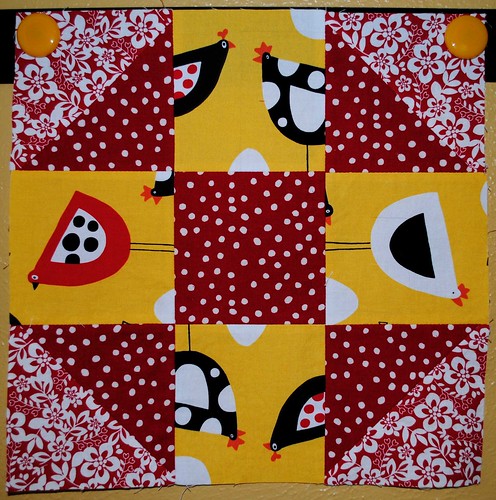
Worms in Dirt
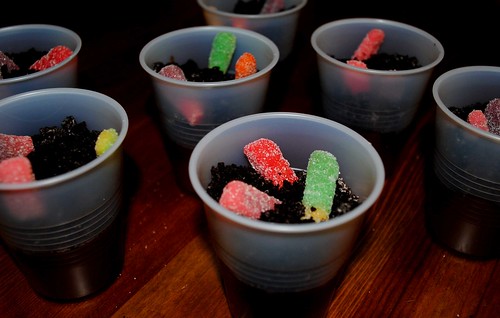
Hungry for some chewy worms and yummy dirt?
Mix up some mud (or maybe instant chocolate pudding) and be sure to lick the spoons, mixers, bowl . . .

Pound the dirt (or perhaps chocolate sandwich cookies) into teeny, tiny pieces.
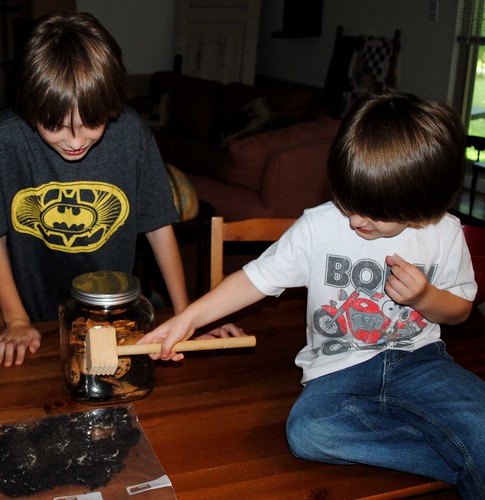
Let the (gummy) worms wiggle their way down into the muck.
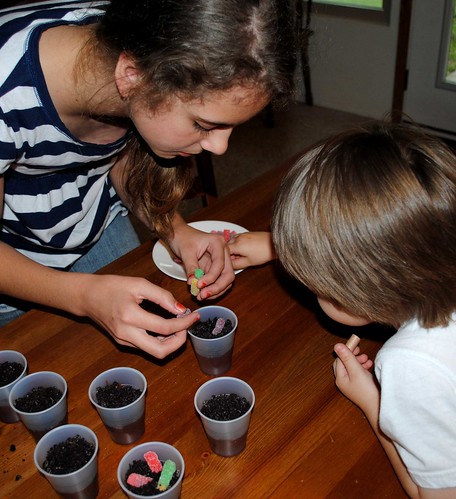
Serve it to Daddy after dinner and try your best to convince him that they’re real worms!

May Quilt Blocks for the Fresh Comfort Quilting Bee
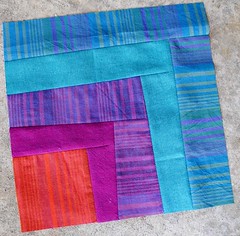
Carrie asked for 3″, 6″, 9″ and 12″ blocky squares this month. She wanted traditional as well as wonky blocks. I had a lot of fun with this one! The block above is a 9″ wonky bento box block. The ones below are 6″ and 3″ improvisational blocks. (That blue, green and purple stripe fabric refused to be ironed flat!)
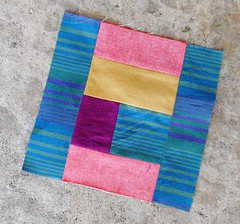
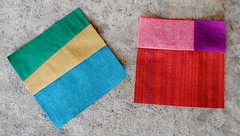
And, as usual, I sewed up two blocks using the same patterns for the quilt that I’m working on putting together.


Next month is my month to send off fabric and receive blocks! I’m so excited! I have all the fabric picked out, and I’m working on a few sample blocks right now.
I’m Late! I’m Late! I’m Late! SMS Giveaway Winner
It’s been a busy couple of days, and I just haven’t had time to sit down and find the winner until now. I loved reading everyone’s comments about my blog and what you love about newborns. Sew Mama Sew Giveaway Days are always so much fun! On to the winner . . . random.org had chosen comment #184:
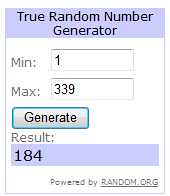
And, comment #184 is from Tara of Tinkerfrog! Congratulations, Tara! I can’t wait to see the sweet baby clothes that you make with the Little One Layette Pattern and fabric.
My Favorite Sewing Tip – Hemming Cotton and Cotton Blend Knits
Be sure to read my updated Hemming Tips here.

Sew Mama Sew is putting together a list of SMS Readers’ Favorite Sewing Tips so I thought now would be a great time to share some of the things I’ve learned about hemming knit fabrics. I love sewing with knit fabrics, and most of my patterns are designed to be sewn with cotton or cotton/polyester blend knits. Because of the stretchy nature of knits, sewing them requires a different approach than sewing wovens, but with the right tools, you can get great results. With the wrong tools, you might end up with wavy stretched out hems like this:

My method is definitely not the only method, but it’s what works best for me. I start with my iron and a can of spray starch.

I like to fold the hem up twice. I feel that the little extra thickness gives a nice look to the stitching and it helps keep stretching to a minimum. Spray the hem allowance on your fabric lightly with spray starch, fold up once and press, then fold up again and press. The starch will also help minimize stretching, and it washes right out when your project is completed. I prefer not to pin because I’ve found that pinning tends to stretch the fabric while you’re sewing. (There’s definitely a theme here. The less stretching, the nicer your hem will look.)

Many sewists use a twin needle for hemming knits. A twin needle is a great option because the way a twin needle stitches allows the fabric to stretch without the threads breaking. Unfortunately, I can never get the stitching on the back of the fabric to look nice with a twin needle, and I prefer to stitch along the hem on the inside. I’ve found that another great way to keep your stitches from breaking with stretching of the fabric is to put Woolly Nylon in the bobbin on your sewing machine.

The last, but maybe the most important, tool for hemming knits is a walking foot. A walking foot has built in feed dogs that move the top of the fabric at the same time and rate of speed as the feed dogs on the sewing machine move the bottom of the fabric. This makes a huge difference in how much your fabric stretches as it travels through your machine.

With Woolly Nylon in your bobbin and your walking foot attached to your machine, position your fabric in your machine with the wrong side facing you. Line your needle up close to the top edge of your hem and stitch all the way down. I check to see which guideline on my machine the bottom edge of the hem is on when I first start and then keep the bottom edge right against that line as I stitch. This way, your hem will be nice and straight on the right side of the fabric.


One other thing that you may have noticed is that I like to hem before I sew or serge my pieces together. It’s much easier to hem a flat piece of fabric and keep it from stretching than it is to sew over seams once the sewn item has been put together. I just tie off my serging or backstitch at the end of each seam when the item that I’m sewing is completed.

I hope that helps make sewing knits a little less intimidating. If you have any questions, just leave a comment, and I’ll try to answer them as quickly as I can!
Updating with some answers to your questions:
Tina asked, “Are walking foots relatively inexpensive?” My Kenmore actually came with a walking foot, so I wasn’t exactly sure how expensive they are. I did a couple of quick Google searches, and it looks like the average cost is around $25.
Steph T. and Sarah H. suggested using a ball point needle which is a very important tip that I left out.
Alisa asked, “You just use a regular straight stitch?” and “When you wind the woolly nylon onto the bobbin do you just do it the way you would normally wind it? You don’t have to change tension or anything?” Yes, I just use a regular straight stitch with WN in the bobbin, and I no longer have any problems with the threads breaking. I wind the WN in the bobbin almost the same way that I would wind normal thread. I place the cone of WN in a coffee cup off to the side of my machine and pull it up through the tension disk. Then I tie a piece of regular thread to the end of the WN and use it to pull the end through the hole in the bobbin and wind it up as usual.
the4rs asked, “Do they make walking feet for older machines, mine Elna is from 1960’s?” My trusty Google search found that Sewing Supply Warehouse carries a universal walking foot. You just have to know whether your machine has a low, high or slant shank.
I hope those answers help. Keep the questions coming, and I’ll keep answering!
May Giveaway Day!

It’s May Giveaway Day at Sew Mama Sew! I always have a great time checking out all the amazing blogs, and, of course, giving away something. We’ve welcomed a new baby boy into our family since the last giveaway day. Baby Charlie was born February 12th, and he is such a blessing!

For this giveaway, I thought I’d share in the joy of sewing tiny baby clothes. They really are so much fun to sew, whether you’re sewing for your own little one or sewing for a shower gift. The winner will receive a copy of my Little One Layette pattern and 1/2 yard each of Pink Chickadees and MOM Robots, both on 100% cotton interlock.

In order to enter, just leave a comment on this post. The winner will be chosen at random, but I’d love to hear what you think of my blog or maybe what you enjoy most about newborn babies. I’ll keep the comments section open until Thursday, May 20th at 10 p. m. central time and post the winner the following morning.
Little Folks Tunic
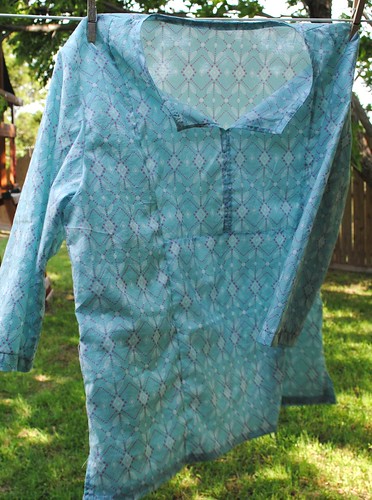
The finalists for Spring Top Week are posted at Made by Rae, and they are amazing! I love all the ruffles and gathers. Obviously I didn’t finish this tunic in time for the contest, but I did finish it! That’s at least a start, right?
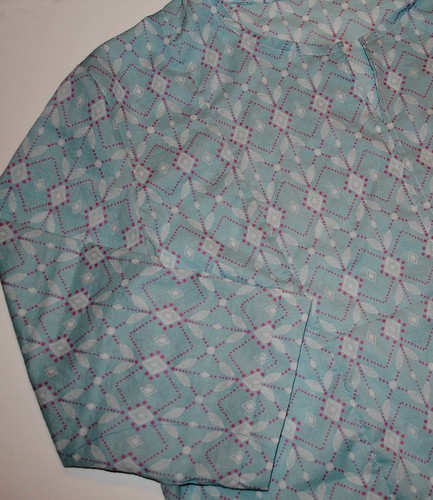
The pattern is Kwik Sew 3162 and the fabric is Anna Maria Horner Little Folks Voile. The pattern was really easy to follow. The only real modification I made was the hem on the sleeves. I just added a simple band to finish them at 3/4 length. Anna Maria Horner’s Voile is amazing. It’s really easy to work with and has the perfect feel and drape for clothing.
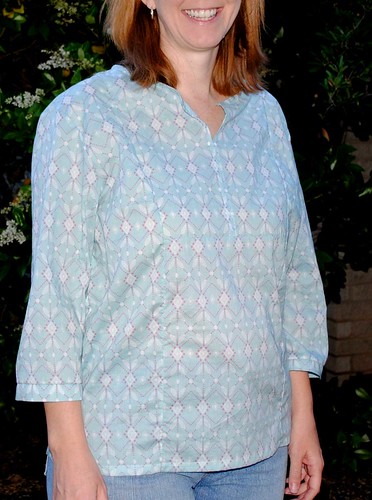
Eliott Elephant Little One Layette Modeled!
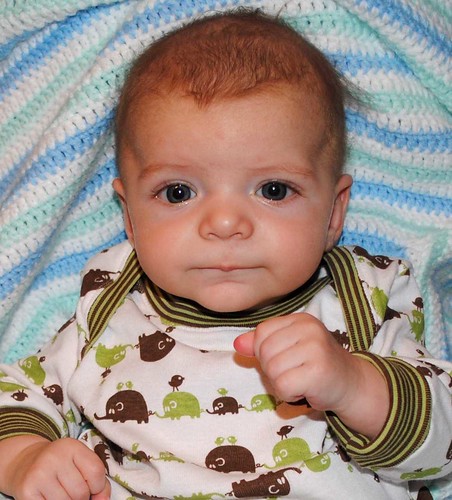
I do realize that I missed the whole entry period for the Rae’s Spring Top Week. It’s a little sad that I didn’t get to enter a top, but this little guy has been keeping me very busy, and who could look into those beautiful blue eyes and complain? I do, actually, have the tunic that I wanted to make partially cut out . . . maybe I’ll finish it this weekend?
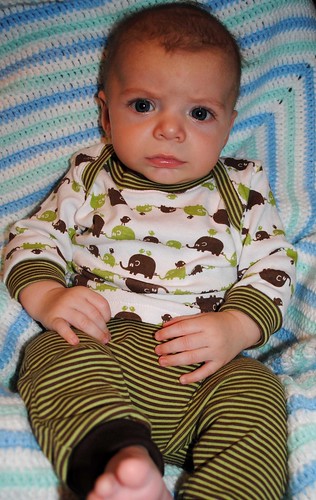
Charlie is growing so fast. I won’t be able to squeeze him into this outfit for too much longer. It’s the wrong season for it now anyway. Now that our little photoshoot is done, I’ll pack it away.

The beautiful blanket behind Charlie in the pictures was crocheted just for him by my mom. It’s gorgeous in real life!
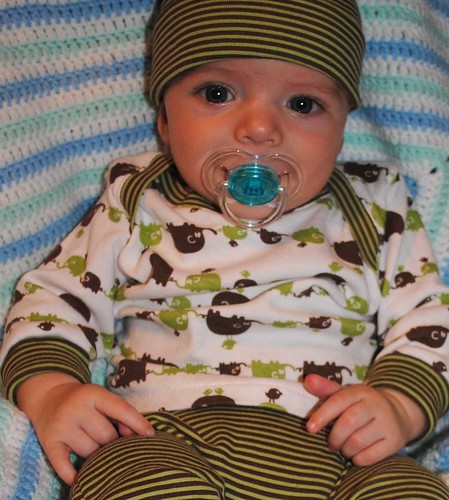
Just one more . . . don’t you want to squeeze him?

Ladybug Diaper Bag #2
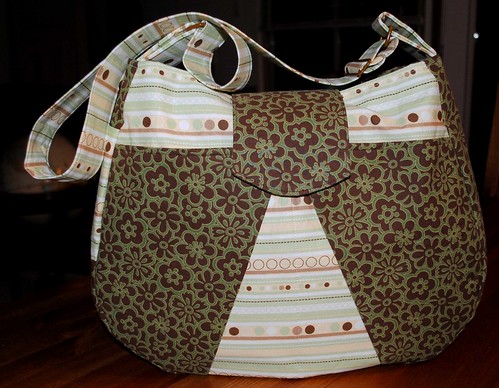
My friend, Michelle, is a week overdue with a new little one. I promised her a diaper bag like the one that I made for us, but with a new little one of my own, it’s taken me a bit to get it finished. Michelle let me pick out the fabrics, so I really hope she likes it! I love how it turned out. Maybe having a cute new diaper bag all ready to go will encourage baby girl or boy to come out and meet us?
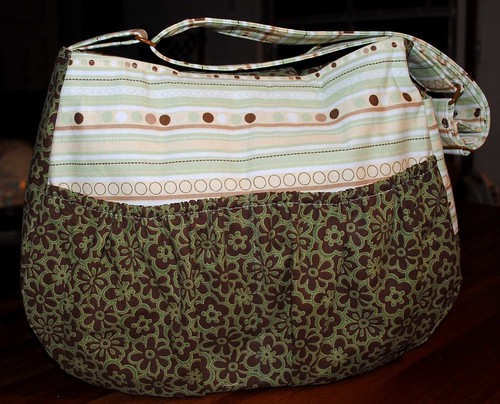
I used the Ladybug Diaper Bag pattern and made the same modifications that I did for the Mom & Baby Bag I made for Charlie a few months ago. The changing pad is a layer of the cotton woven in the bag backed with organic bamboo/cotton velour. It’s soooo soft!
